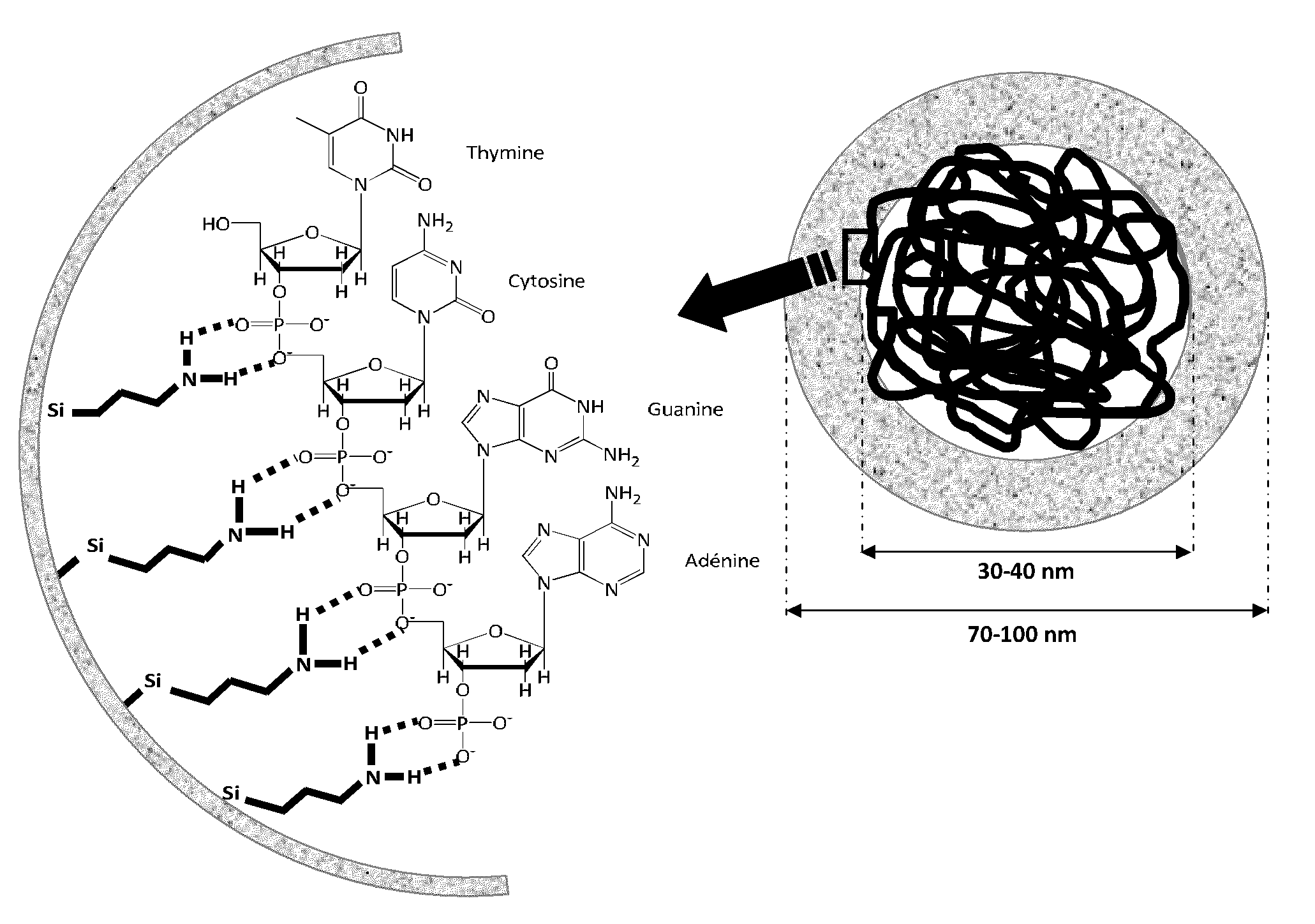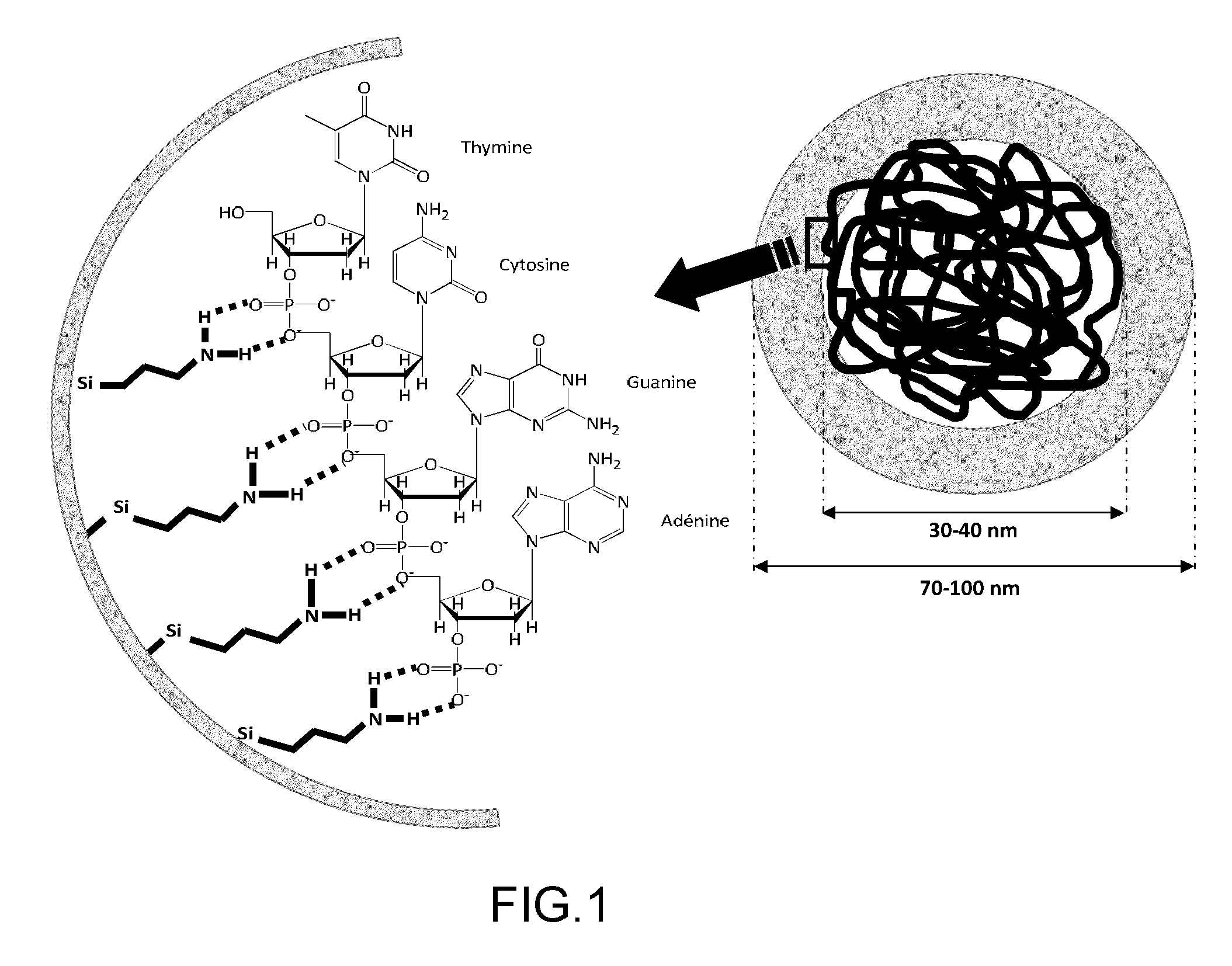Silica particle including a molecule of interest, method for preparing same and uses thereof
- Summary
- Abstract
- Description
- Claims
- Application Information
AI Technical Summary
Benefits of technology
Problems solved by technology
Method used
Image
Examples
Embodiment Construction
[0164]I. Protocol for Synthesizing DNA-Encapsulating Nanoparticles
[0165]I.1. Nanoparticles Encapsulating DNA with Size of the Order of 100 nm (Protocol I)
[0166]The nanoparticles were prepared using the reverse microemulsion method (water-in-oil) [6].
[0167]The microemulsion solution was prepared by mixing the adequate quantities of surfactant, co-surfactant, organic solvent, water and aqueous ammonia solution, APTMES (3-aminopropyl-trimethoxysilane; d=1.027; M=179.29 gmol−1) and TEOS (tetraethoxysilane; d=0.934; M=208.33 gmol−1). The ammonia (NH4OH) on decomposing acts as reagent (H2O) and as catalyst (NH3) for the hydrolysis of TEOS and of APTMES.
[0168]The conventional preparation of a reverse microemulsion for fabricating silica nanoparticles containing a plasmid is described below. This protocol allows particles to be obtained of the order of 100 nm (see TEM photos in FIG. 2).
[0169]The procedure consists in adding in a 50 mL flask, observing the described order, the following chem...
PUM
| Property | Measurement | Unit |
|---|---|---|
| Fraction | aaaaa | aaaaa |
| Fraction | aaaaa | aaaaa |
| Fraction | aaaaa | aaaaa |
Abstract
Description
Claims
Application Information
 Login to View More
Login to View More - R&D
- Intellectual Property
- Life Sciences
- Materials
- Tech Scout
- Unparalleled Data Quality
- Higher Quality Content
- 60% Fewer Hallucinations
Browse by: Latest US Patents, China's latest patents, Technical Efficacy Thesaurus, Application Domain, Technology Topic, Popular Technical Reports.
© 2025 PatSnap. All rights reserved.Legal|Privacy policy|Modern Slavery Act Transparency Statement|Sitemap|About US| Contact US: help@patsnap.com



